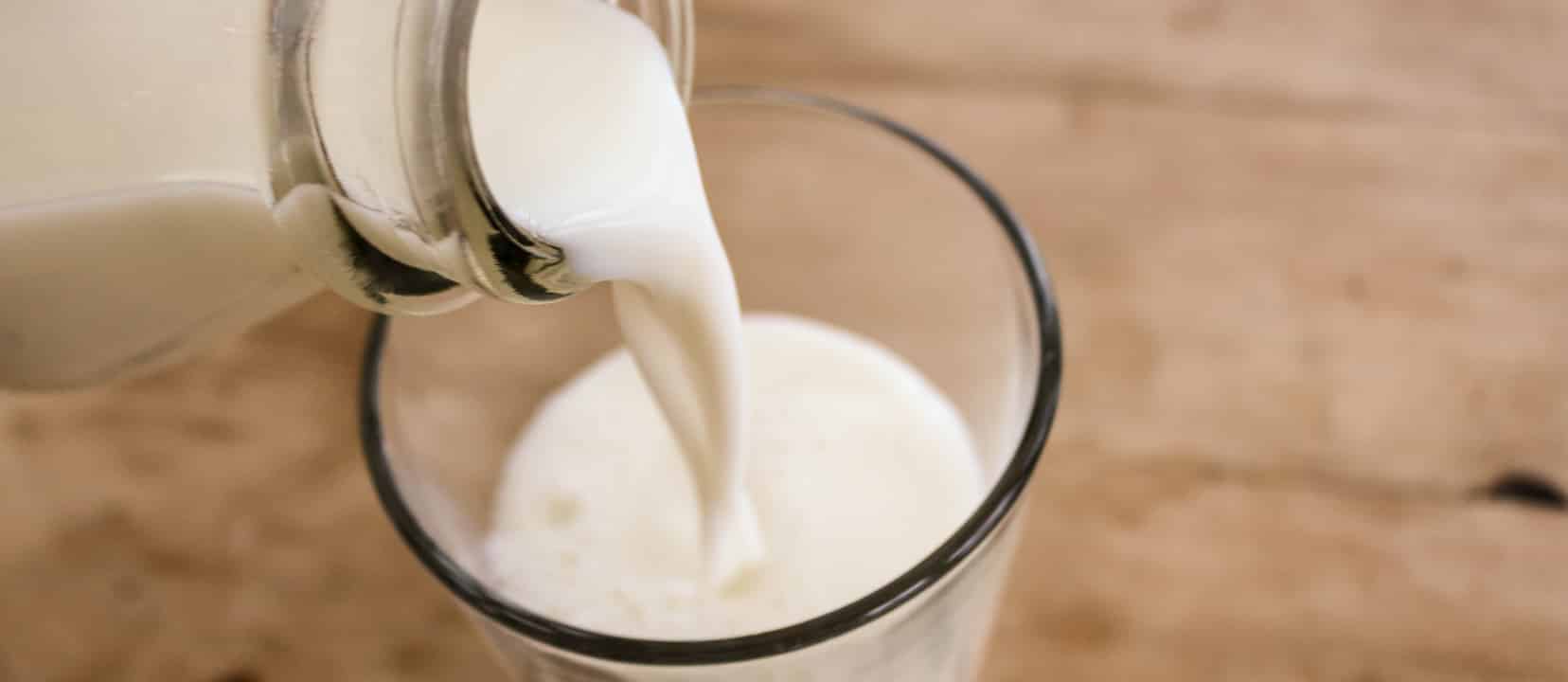Milk is touted to build strong bones, but a compilation of all the best studies found no association between milk consumption and hip fracture risk; so, drinking milk as an adult might not help bones, but what about in adolescence? Harvard researchers decided to put it to the test.
Studies have shown that greater milk consumption during childhood and adolescence contributes to peak bone mass, and is therefore expected to help avoid osteoporosis and bone fractures in later life. But that’s not what researchers have found (as you can see in my video Is Milk Good for Our Bones?). Milk consumption during teenage years was not associated with a lower risk of hip fracture, and if anything, milk consumption was associated with a borderline increase in fracture risk in men.
It appears that the extra boost in total body bone mineral density from getting extra calcium is lost within a few years, even if you keep the calcium supplementation up. This suggests a partial explanation for the long-standing enigma that hip fracture rates are highest in populations with the greatest milk consumption. This may be an explanation for why they’re not lower, but why would they be higher?
This enigma irked a Swedish research team, puzzled because studies again and again had shown a tendency of a higher risk of fracture with a higher intake of milk. Well, there is a rare birth defect called galactosemia, where babies are born without the enzymes needed to detoxify the galactose found in milk; so, they end up with elevated levels of galactose in their blood, which can cause bone loss even as kids. So maybe, the Swedish researchers figured, even in normal people that can detoxify the stuff, it might not be good for the bones to be drinking it every day.
And galactose doesn’t just hurt the bones. Galactose is what scientists use to cause premature aging in lab animals—it can shorten their lifespan, cause oxidative stress, inflammation, and brain degeneration—just with the equivalent of like one to two glasses of milk’s worth of galactose a day. We’re not rats, though. But given the high amount of galactose in milk, recommendations to increase milk intake for prevention of fractures could be a conceivable contradiction. So, the researchers decided to put it to the test, looking at milk intake and mortality as well as fracture risk to test their theory.
A hundred thousand men and women were followed for up to 20 years. Researchers found that milk-drinking women had higher rates of death, more heart disease, and significantly more cancer for each glass of milk. Three glasses a day was associated with nearly twice the risk of premature death, and they had significantly more bone and hip fractures. More milk, more fractures.
Men in a separate study also had a higher rate of death with higher milk consumption, but at least they didn’t have higher fracture rates. So, the researchers found a dose dependent higher rate of both mortality and fracture in women, and a higher rate of mortality in men with milk intake, but the opposite for other dairy products like soured milk and yogurt, which would go along with the galactose theory, since bacteria can ferment away some of the lactose. To prove it though, we need a randomized controlled trial to examine the effect of milk intake on mortality and fractures. As the accompanying editorial pointed out, we better find this out soon, since milk consumption is on the rise around the world.
What can we do for our bones, then? Weight-bearing exercise such as jumping, weight-lifting, and walking with a weighted vest or backpack may help, along with getting enough calcium (Alkaline Diets, Animal Protein, & Calcium Loss) and vitamin D (Resolving the Vitamin D-Bate). Eating beans (Phytates for the Prevention of Osteoporosis) and avoiding phosphate additives (Phosphate Additives in Meat Purge and Cola) may also help.
Maybe the galactose angle can help explain the findings on prostate cancer (Prostate Cancer and Organic Milk vs. Almond Milk) and Parkinson’s disease (Preventing Parkinson’s Disease With Diet).
Galactose is a milk sugar. There’s also concern about milk proteins (see my casomorphin series) and fats (The Saturated Fat Studies: Buttering Up the Public and Trans Fat in Meat and Dairy) as well as the hormones (Dairy Estrogen and Male Fertility, Estrogen in Meat, Dairy, and Eggs and Why Do Vegan Women Have 5x Fewer Twins?).
Milk might also play a role in diabetes (Does Casein in Milk Trigger Type 1 Diabetes, Does Bovine Insulin in Milk Trigger Type 1 Diabetes?) and breast cancer (Is Bovine Leukemia in Milk Infectious?, The Role of Bovine Leukemia Virus in Breast Cancer, and Industry Response to Bovine Leukemia Virus in Breast Cancer).
In health,
Michael Greger, M.D.
PS: If you haven’t yet, you can subscribe to my free videos here and watch my live, year-in-review presentations:
- 2012: Uprooting the Leading Causes of Death
- 2013: More Than an Apple a Day
- 2014: From Table to Able: Combating Disabling Diseases with Food
- 2015: Food as Medicine: Preventing and Treating the Most Dreaded Diseases with Diet
- 2016: How Not To Die: The Role of Diet in Preventing, Arresting, and Reversing Our Top 15 Killers
